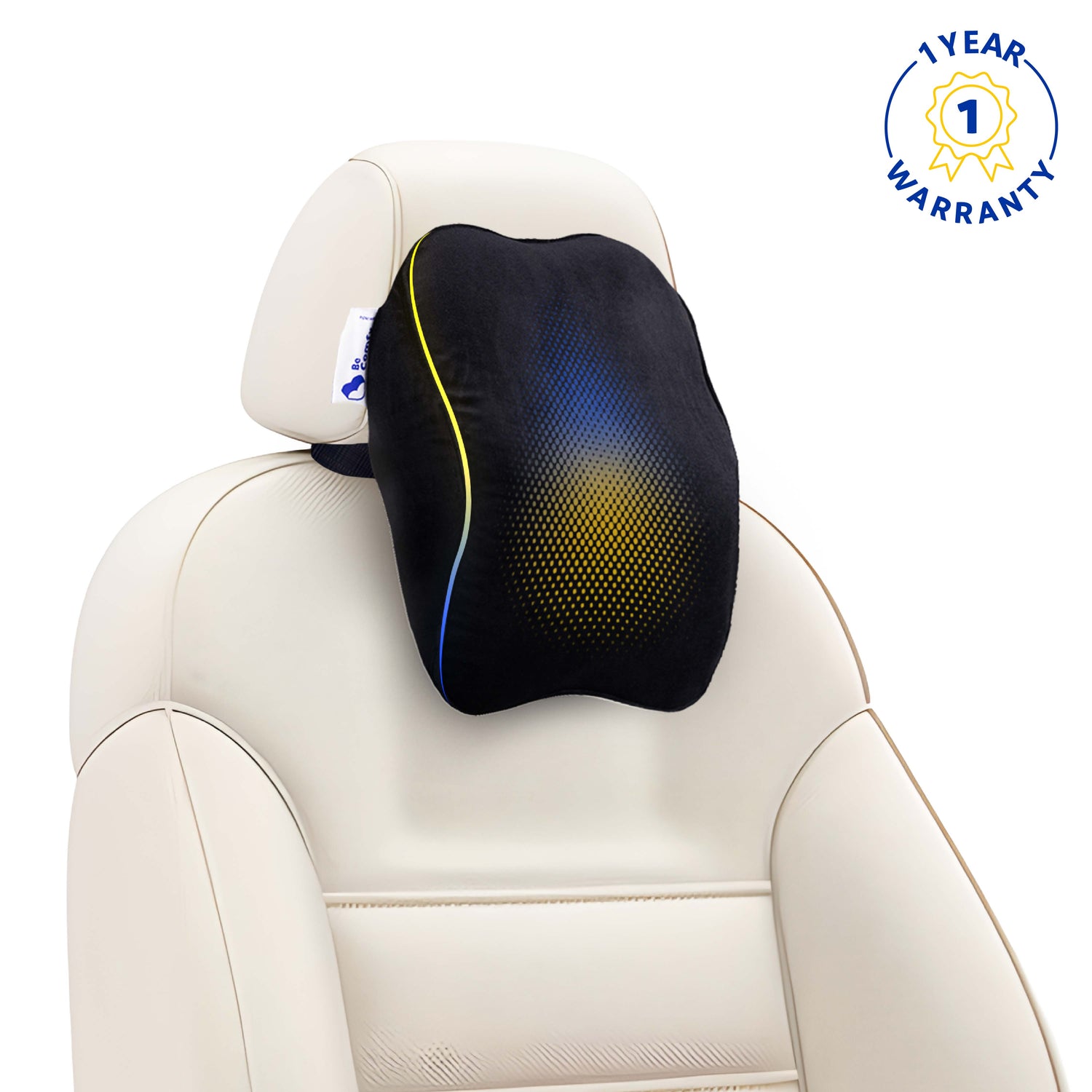Stop Slouching! 7 Practical Tips to Improve Your Posture While Sitting and Standing
Share
In our modern lives, filled with desk jobs, long commutes, and screen time, it's easy to fall into the habit of slouching. That familiar slump over the keyboard or the rounded shoulders while standing might seem harmless, but poor posture is a major contributor to common complaints like back pain, neck strain, and headaches. It can even affect our confidence and breathing.
The good news is that improving your posture is achievable with conscious effort and practice. It's about training your body to hold itself in positions where the least strain is placed on supporting muscles and ligaments. Whether you're sitting at your desk or standing in line, here are 7 practical tips to help you stop slouching and stand (or sit) taller:
1. Set Your Foundation (Sitting)
Good sitting posture starts from the ground up.
- Feet Flat: Plant both feet flat on the floor. Avoid crossing your legs or ankles for extended periods. Your knees should be roughly level with or slightly lower than your hips.
- Use a Footrest if Needed: If your chair is too high to allow your feet to rest flat, use a footrest (or a sturdy stack of books in a pinch) to bring the floor up to you.
2. Sit Tall and Engage Your Core (Sitting)
Actively think about your alignment.
- Align Head, Shoulders, Hips: Imagine a straight line running vertically from your ears, through your shoulders, down to your hips. Your head should be balanced directly over your shoulders, not jutting forward.
- Lift Up: Visualize a string gently pulling the crown of your head towards the ceiling, lengthening your spine. Alternatively, think about pressing your "sit bones" firmly into the chair.
- Gentle Core Engagement: Lightly engage your abdominal muscles to help support your spine.
3. Relax Your Shoulders (Sitting & Standing)
Shoulder tension is a common posture problem.
- Down and Back: Consciously relax your shoulders, letting them drop down away from your ears. Gently draw your shoulder blades slightly back and down, opening up your chest. Avoid rounding your shoulders forward.
4. Support Your Lower Back (Sitting)
Maintaining the natural inward curve (lordosis) of your lower back is crucial to prevent slouching.
- Use Chair Support: Adjust your chair's built-in lumbar support to fit snugly into the curve of your lower back.
- Add a Cushion: If your chair lacks adequate support (a common issue!), use an external lumbar support cushion. Products like the BeComfy Back Support for Chair are specifically designed with an ergonomic contour and memory foam to provide this essential support, helping you maintain alignment and reduce strain.
5. Align Your Body (Standing)
Good standing posture follows similar alignment principles.
- Imagine a Plumb Line: Visualize a straight line running down the side of your body, connecting your earlobe, the tip of your shoulder, the center of your hip, the back of your knee, and the front of your ankle bone.
- Head Up, Chin Parallel: Keep your head level and balanced, with your chin roughly parallel to the floor. Avoid letting your head drift forward ("text neck").
6. Stand Stable and Even (Standing)
How you distribute your weight matters.
- Feet Hip-Width Apart: Stand with your feet about hip-width apart for a stable base.
- Even Weight Distribution: Distribute your weight evenly across both feet. Avoid leaning heavily on one leg.
- Soft Knees: Keep a slight bend in your knees – don't lock them.
- Neutral Pelvis: Maintain a neutral pelvic position, avoiding tilting it too far forward or backward.
7. Be Mindful and Move Frequently
Improving posture isn't a one-time fix; it requires ongoing awareness.
- Regular Check-ins: Periodically check your posture throughout the day. Are you slouching? Readjust as needed.
- Take Movement Breaks: Sitting or standing in one position for too long leads to fatigue, making it harder to maintain good posture. Get up, walk around, and stretch every 30-60 minutes to reset your body.
Conclusion: Stand Tall, Feel Better
Breaking the slouching habit takes conscious effort, but the benefits – reduced pain, increased confidence, and better overall well-being – are well worth it. Start by incorporating one or two of these tips into your daily routine, gradually building awareness. Remember that tools like ergonomic chairs and back support cushions can significantly aid the process by providing physical cues and support. By consistently practicing these simple adjustments, you can train your body to adopt a healthier, more comfortable posture both while sitting and standing.

